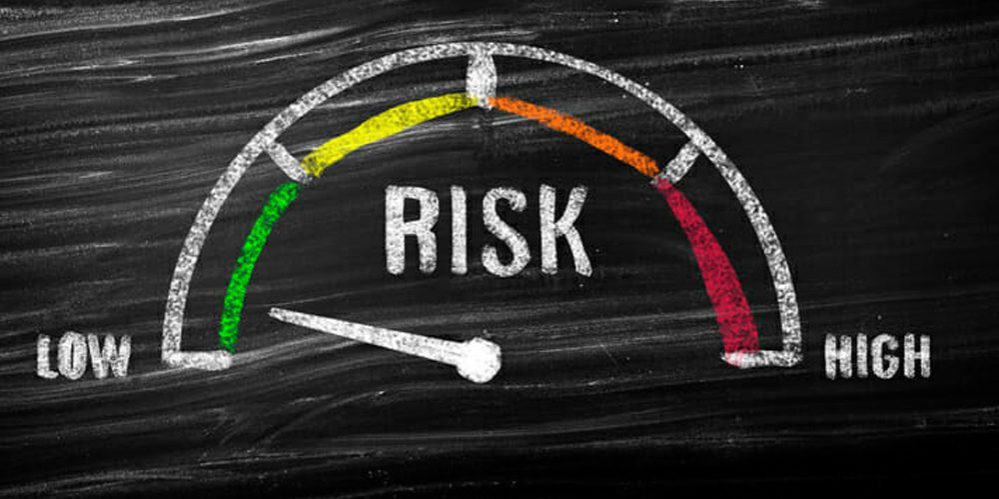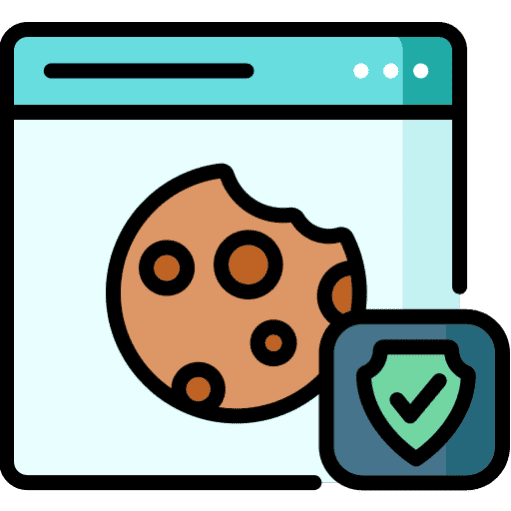In this fast-paced world, we live in, time is a precious resource that often slips through our fingers like sand. We find ourselves constantly juggling tasks, responding to countless notifications, and getting lost in the vast abyss of social media. But what if there was a way to reclaim that lost time, to make every minute count?
Well, dear reader, you're in luck! In this article, we will explore the art of minimizing wasted time and uncover the secrets to utilizing your precious hours effectively.
Importance of Minimizing Wasted Time
Time is one of those things that once it's gone, it's gone forever. Every moment squandered on unproductive activities is a missed opportunity for personal growth and accomplishment.
By recognizing the importance of minimizing wasted time, we can unlock a whole new level of productivity and fulfillment in our lives. When we allow ourselves to be consumed by distractions and engage in non-value-adding activities like mindless scrolling through social media or falling into the abyss of unnecessary meetings or conversations, our goals get pushed further away.
We become trapped in a cycle of busyness without actually achieving anything substantial. By consciously striving to minimize wasted time, we can break free from this cycle and create space for meaningful work and personal pursuits.
Benefits of Utilizing Time Effectively
Imagine a life where you consistently achieve your goals with ease while still having ample time for leisure activities or quality moments with loved ones; an existence where productivity isn't just an elusive dream but a tangible reality. By mastering the art of utilizing time effectively, these benefits can become your everyday experience. One significant benefit is increased efficiency.
When we manage our time well and focus on important tasks rather than getting caught up in trivial matters, we become more efficient at completing our work. This newfound efficiency not only saves us countless hours but also allows us to excel in our endeavors and stand out from the crowd.
Another advantage of effective time management is reduced stress levels. When we have a clear plan for how to spend our time, we can approach each day with a sense of purpose and direction.
This eliminates the anxiety that often comes with uncertainty and allows us to tackle our tasks with confidence. By minimizing wasted time, we create space for relaxation, self-care, and rejuvenation, resulting in a healthier mindset and overall well-being.
Furthermore, utilizing time effectively enables us to pursue personal growth and development. When we prioritize tasks that align with our goals and aspirations, we are investing in ourselves.
Whether it's learning a new skill or dedicating time to a passion project, using our time wisely gives us the space to explore new opportunities and expand our horizons. Minimizing wasted time is not just about being more efficient; it's about reclaiming control over how we spend each precious moment.
Through effective time management techniques and a conscious effort to prioritize meaningful work over distractions, we can unlock a world of possibilities where productivity flourishes, stress diminishes, and personal growth thrives. So buckle up as we embark on this journey together—where lost hours transform into moments of purposeful living.
Understanding Time Wasters
Ah, the time thieves that lurk in the shadows, sucking away precious minutes and hours from our lives. It's crucial to identify these sneaky culprits to take control of our time.
One such notorious culprit is social media scrolling. We all know how addictive it can be, with endless feeds and enticing notifications that effortlessly lure us into a bottomless pit of memes and cat videos.
Another notorious thief is excessive meetings or conversations. While collaboration is essential, let's be honest – not all meetings are productive.
Sometimes they seem like mere excuses for people to hear themselves talk or display their PowerPoint prowess. And don't get me started on those never-ending water cooler conversations that make you forget what you walked into the office for!
Social media scrolling
Picture this: you open your favorite social media app to check one message or quickly browse through a few updates, but before you know it, hours have slipped away like sand through your fingers! Social media scrolling is undoubtedly one of the greatest adversaries when it comes to effective time management. Here's a startling fact: according to recent studies, the average person spends around two and a half hours on social media every day!
That's an astounding amount of time wasted instead of doing something productive or meaningful. So why does social media have such an irresistible allure?
Well, these platforms are designed with addictive features that keep us glued – infinite scroll, vibrant colors, personalized content feeds tailored just for us. It becomes a mindless habit we're unaware of until we realize how much time we've lost in its clutches.
Excessive meetings or conversations
Meetings can either be a productive forum for brainstorming ideas and making decisions or an egregiously wasteful endeavor where nothing substantial gets accomplished. Sadly, the latter seems to be more common these days. Have you ever been in a meeting that goes on and on, seemingly without purpose or direction?
The room becomes a breeding ground for tangents, unrelated anecdotes, and incoherent babbling. Before you know it, precious hours have been squandered on empty talk.
Similarly, those impromptu conversations at the water cooler or near the coffee machine can be delightful social interactions but often at the expense of time that could have been better spent working on tasks that genuinely matter. It's not about cutting out all conversations; it's about being mindful of their impact on your productivity.
Procrastination and multitasking
Ah, procrastination – the art of delaying tasks until they become unbearable mountains of stress. We've all fallen victim to its seductive grasp at some point.
Whether it's checking email for the umpteenth time or indulging in random YouTube binges instead of tackling important assignments, procrastination eats away at our precious time like a voracious beast. Multitasking might seem like an efficient approach to get more done simultaneously, but studies show that our brains aren't designed for true multitasking.
Instead, we switch between tasks rapidly – a phenomenon known as task switching – which decreases overall efficiency and increases the chances of errors. To combat both procrastination and multitasking, we need discipline and focus.
It starts with breaking down tasks into smaller manageable chunks and creating a clear plan of action. Embracing techniques like time-blocking can help allocate specific time slots for different activities while minimizing distractions.
Remember: understanding these common time-wasting activities is key to reclaiming control over our schedules. By identifying them early on and implementing effective strategies to minimize their impact, we pave the way toward maximizing our productivity potential!
Strategies for Minimizing Wasted Time
Here are the best time management strategies, according to experts like the University of Sheffield, the National Institutes of Health, and the Charles Darwin University.
Prioritizing tasks and setting goals
One of the most effective ways to minimize wasted time is by prioritizing tasks and setting clear goals. By understanding what needs to be done and in what order, you can focus your energy on the most important activities.
A helpful tool for task management is the Eisenhower Matrix, which categorizes tasks into four quadrants based on their urgency and importance. This matrix allows you to identify high-priority tasks requiring immediate attention, ensuring that you allocate your time wisely.
Utilizing the Eisenhower Matrix for task management
The Eisenhower Matrix, named after former U.S. President Dwight D. Eisenhower, provides a systematic approach to managing your tasks. It consists of four quadrants: Urgent and important, Important but Not Urgent, Urgent but Not Important, and Not Urgent and not Important.
By using this matrix as a guide, you can prioritize your tasks effectively. In the Urgent and important quadrant, focus on completing tasks that have impending deadlines or require immediate attention.
These are often critical activities that cannot be delayed without consequences. The Important but Not Urgent quadrant contains tasks that contribute to long-term goals or personal growth but may not have pressing deadlines.
Allocate regular time slots for these activities to ensure they are not overlooked or left undone. Tasks classified as Urgent but Not Important should be evaluated carefully.
Consider delegating or finding more efficient ways to complete them so they don't consume valuable time that could be better spent elsewhere. In the Not Urgent & Not Important quadrant lies distractions or unnecessary activities that can be eliminated from your schedule entirely.
Breaking down large tasks into smaller, manageable chunks
Large projects or complex assignments can often seem overwhelming at first glance. To tackle them efficiently and minimize wasted time, break them down into smaller, more manageable tasks.
By dividing the project into bite-sized chunks, you can focus on completing one step at a time without feeling overwhelmed. This approach not only makes the work more digestible but also allows for better planning and progress tracking.
Creating a structured schedule and sticking to it
To optimize your time usage, it's crucial to create a structured schedule that outlines your daily activities and commitments. Start by determining your most productive hours based on personal preferences and energy levels. Then allocate specific time slots for different activities using time-blocking techniques.
Set realistic deadlines for each task or activity within your schedule to maintain a sense of urgency and accountability. Be mindful of setting achievable goals to avoid overburdening yourself or setting unrealistic expectations that may lead to frustration or burnout.
Eliminating distractions in the work environment
Minimizing distractions is essential when aiming to maximize productivity and minimize wasted time. One effective method is setting boundaries with colleagues or family members during designated work periods.
Communicate clearly about your need for uninterrupted focus, whether it's closing the door, putting on headphones, or using visual cues such as indicating when you are unavailable for interruptions. Additionally, utilize productivity apps like RescueTime or browser extensions that help block distracting websites during dedicated work sessions.
These tools can temporarily restrict access to social media platforms, online shopping sites, or any other websites that commonly divert your attention away from important tasks. By implementing these strategies in prioritizing tasks and goals, utilizing the Eisenhower Matrix and breaking down large tasks into smaller chunks, and creating a structured schedule with realistic deadlines while eliminating distractions in the work environment; you can significantly minimize wasted time and enhance overall productivity in both professional and personal spheres of life.
Boosting Productivity through Time Management Techniques
Utilizing the Pomodoro Technique for focused work sessions
Picture this: you sit down at your desk, ready to tackle a project, only to find yourself easily distracted after a few minutes. Sounds familiar? Well, fret not!
The Pomodoro Technique is here to rescue your productivity. This time management technique involves breaking your work into intervals of intense focus followed by short breaks.
Here's how it works: set a timer for, let's say, 25 minutes and commit yourself to work on a specific task with undivided attention during that period. Once the timer goes off, take a short break of around 5 minutes.
Repeat this cycle four times and then take a longer break of about 15-30 minutes. By adopting the Pomodoro Technique, you create structured work intervals that boost concentration and prevent burnout.
These focused bursts of activity allow you to make significant progress on your tasks while knowing that a break is just around the corner. Moreover, it promotes mental agility as you challenge yourself to complete as much as possible within each time frame.
Implementing the “Eat That Frog” method to tackle challenging tasks first
Mark Twain famously said, “Eat a live frog first thing in the morning and nothing worse will happen to you the rest of the day.” While I don't recommend literally eating amphibians, adopting Twain's philosophy can do wonders for your productivity. The “Eat That Frog” method suggests tackling the most challenging or important task right at the beginning of your day. Why start with something difficult?
Well, often these daunting tasks tend to hang over our heads all day long if we leave them until later. By taking care of them early on when you have fresh energy and focus, you eliminate procrastination and gain momentum for the rest of the day.
So, identify the frog on your to-do list—the task you've been avoiding—and commit to completing it first thing in the morning. Once you've accomplished that, the rest of your day will feel like a breeze.
Leveraging technology tools for efficient time management
In today's digital world, technology can be both a curse and a blessing when it comes to time management. However, by utilizing the right tools and apps, you can harness its power to enhance productivity significantly. Project management software and task-tracking apps are invaluable resources for organizing your work efficiently.
These tools enable you to create project schedules, set deadlines, assign tasks to team members, and track progress—all in one place. With real-time updates and seamless collaboration features, you'll stay on top of your projects while minimizing wasted time spent searching for information or coordinating with colleagues.
Furthermore, automation tools can help streamline repetitive tasks that eat up your valuable time. Whether it's automating email responses or creating templates for frequently used documents, these tools can reduce manual effort and free up more of your focus for high-value activities.
Explore different automation options available within your existing software or consider dedicated automation platforms to discover how they can revolutionize your workflow. Remember: technology is just a tool; it's how you use it that makes all the difference.
Be selective about which technologies align with your specific needs and embrace them as allies in maximizing efficiency. That concludes our exploration of various time management techniques aimed at boosting productivity.
By implementing practices like Pomodoro sessions, tackling challenging tasks head-on with the “Eat That Frog” method, and leveraging technology tools intelligently—such as project management software and automation solutions—you'll reclaim control over your time while accomplishing more with less effort. So go ahead; try out these strategies and watch as wasted minutes transform into precious moments of accomplishment!
Tips for Personal Efficiency Improvement
In the quest for personal efficiency, it's crucial to prioritize self-care. When we neglect our physical and mental well-being, our productivity suffers.
Here are some self-care habits that can enhance focus and overall efficiency:
1. Get enough sleep: Adequate sleep is the foundation of a productive day. Aim for seven to eight hours of quality sleep each night to wake up refreshed and ready to tackle your tasks.
2. Exercise regularly: Physical activity boosts energy levels and improves cognitive function. Incorporate exercise into your routine to increase alertness, reduce stress, and enhance concentration throughout the day.
3. Practice mindfulness or meditation: By taking a few minutes each day to center your mind through mindfulness or meditation techniques, you cultivate focus and reduce distractions that can derail productivity.
4. Take regular breaks: Continuous work without breaks can lead to mental fatigue and decreased productivity over time. Schedule short breaks throughout the day to recharge your mind, stretch your body, or engage in activities that bring you joy.
5. Maintain a healthy diet: Nourishing your body with nutritious foods helps sustain energy levels and supports optimal brain function. Avoid excessive caffeine or sugary snacks that may provide temporary energy spikes but ultimately result in crashes.
Abschluss
Minimizing wasted time requires intentional effort, but the rewards are worth it – increased productivity, reduced stress levels, and a greater sense of fulfillment in both personal and professional endeavors. By understanding common time wasters, implementing effective strategies such as prioritization and structured scheduling, leveraging time management techniques like the Pomodoro Technique or “Eat That Frog” method, while also prioritizing self-care habits like adequate sleep and regular exercise – we can all make significant progress towards becoming more efficient individuals.
Remember that Rome wasn't built in a day, and efficiency is not an overnight transformation. It requires consistent practice and adjustment to find what works best for you.
Embrace the journey with a positive mindset, celebrate small victories along the way, and be kind to yourself when setbacks occur. With patience and perseverance, you'll gradually develop habits that optimize your time, allowing you to accomplish more while still having space for meaningful moments of rest and rejuvenation.
So go forth with determination, armed with these tips to minimize wasted time! May you unlock your true potential, make the most of each precious moment, and embrace a more fulfilling life where productivity becomes second nature.

















